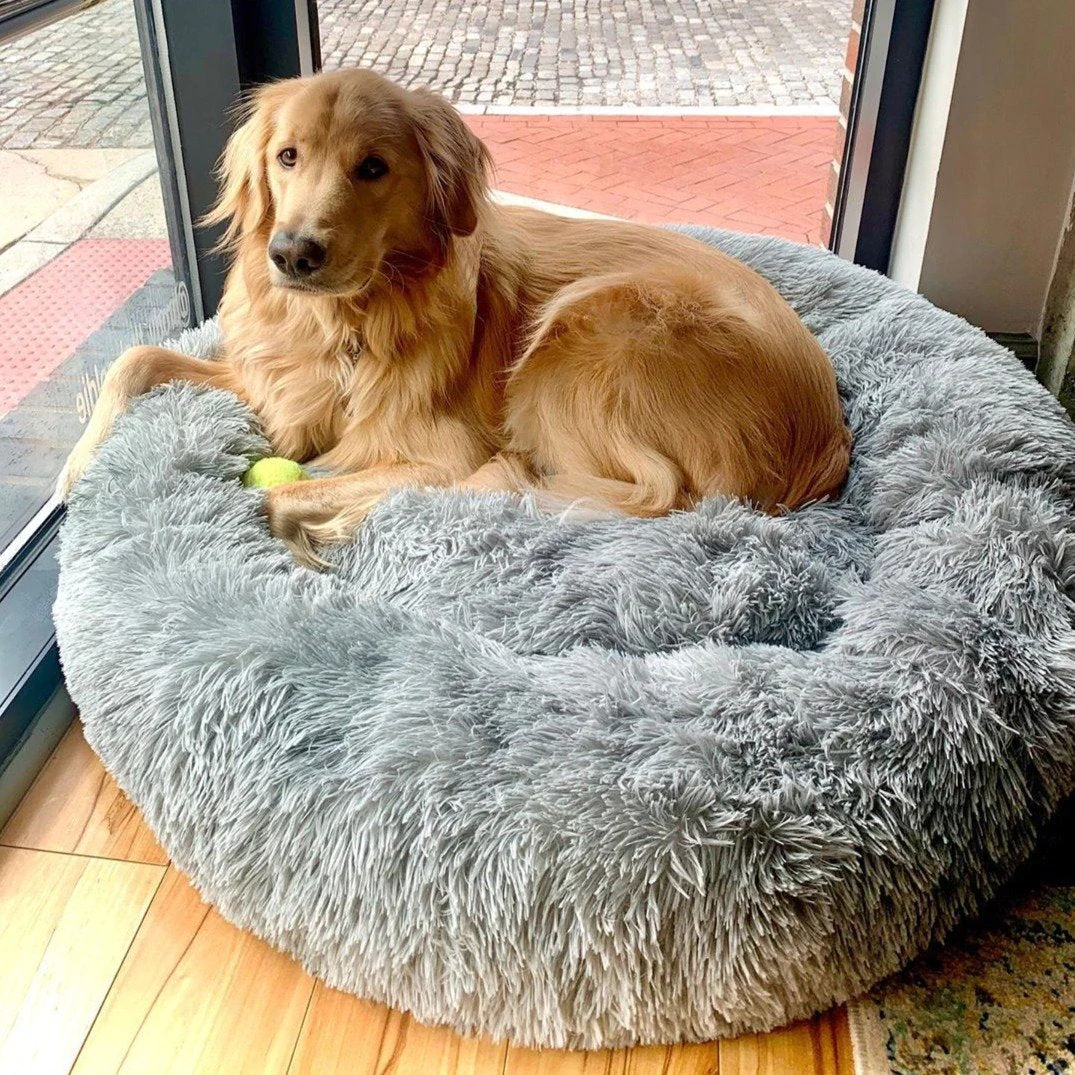Seeing your dog suffer from separation anxiety is heartbreaking as a pet owner. They may bark excessively, destroy furniture, or attempt to escape the house. Although there are several solutions to this issue, some pet owners have found that anxiety dog beds may help alleviate their dog’s separation anxiety. In this article, we’ll explore what anxiety beds are, how they work, and if they can help with separation anxiety.
What is an Anxiety Bed?
Anxiety beds are specially designed dog beds that are intended to provide a sense of security and comfort to dogs. They are typically made of soft and plush materials such as faux fur, memory foam, and cotton. Anxiety beds come in different shapes and sizes; some even have raised edges or hoods to simulate the feeling of being surrounded or embraced.
The Benefits of Anxiety Beds for Dogs
Aside from providing comfort and security, anxiety beds can offer several other benefits for dogs. For instance, anxiety beds can help dogs with joint pain or arthritis by providing extra cushioning and support. Additionally, anxiety beds can help keep dogs cool in warm weather by allowing air to circulate under their bodies.
Can Anxiety Beds Help with Separation Anxiety?
While anxiety beds cannot cure separation anxiety, they may help alleviate the symptoms of separation anxiety. The sense of security and comfort provided by anxiety beds can help reduce stress and anxiety in dogs, which can reduce destructive behaviour or excessive barking. However, it’s important to note that anxiety beds should be used in conjunction with other solutions and training methods for separation anxiety.
Factors to Consider Before Buying an Anxiety Bed
Before purchasing an anxiety bed for your dog, consider several factors. Firstly, you must ensure the bed is appropriate for your dog. The bed should be big enough for your dog to stretch out comfortably but not so big that they feel overwhelmed. Additionally, you should consider the materials used in the bed and ensure they are high-quality and safe for your dog.
When choosing an anxiety bed for your dog, it’s important to consider their individual needs and preferences. Some dogs prefer a bed with raised edges or hoods, while others prefer a flat or orthopedic bed. You should also consider the bed’s durability and ease of cleaning, especially if your dog is prone to accidents or shedding.
Training Your Dog to Use an Anxiety Bed
While some dogs may take to an anxiety bed immediately, others may need some training to become comfortable using it. You can encourage your dog to use their anxiety bed by placing treats or toys on the bed and praising them when they interact with it. You can also place the bed in a quiet and comfortable spot in the house where your dog can feel secure.
Alternative Solutions for Separation Anxiety
While anxiety beds can be a helpful tool for managing separation anxiety, they should be used in conjunction with other solutions and training methods. Some alternative solutions for separation anxiety include:
- Gradually increasing the amount of time your dog spends alone
- Desensitization training
- Crate training
- Regular exercise and mental stimulation
- Anti-anxiety medication prescribed by a veterinarian
Signs of Improvement in Your Dog’s Separation Anxiety
If you’re using an anxiety bed to help manage your dog’s separation anxiety, there are several signs you can look for to determine if it’s working. These signs include:
- A reduction in destructive behaviour or excessive barking
- Increased comfort and relaxation when using the anxiety bed
- Fewer signs of stress or anxiety when you leave the house
How Long Does It Take for Anxiety Beds to Work?
The effectiveness of anxiety beds can vary from dog to dog, and it may take some time for your dog to become comfortable using the bed. In some cases, dogs may immediately take to bed and experience relief from their anxiety. In other cases, it may take several weeks of consistent use before you start to see an improvement in your dog’s behaviour.
Frequently Asked Questions (FAQs)
- What Causes Separation Anxiety in Dogs?
Separation anxiety in dogs can be caused by various factors, including lack of socialisation, past trauma, and changes in routine or environment. - How Can I Prevent Separation Anxiety in My Dog?
You can prevent separation anxiety in your dog by gradually increasing their time alone, providing plenty of exercises and mental stimulation, and practising positive reinforcement training. - Can Medication Help with Separation Anxiety?
Anti-anxiety medication prescribed by a veterinarian can be a helpful tool in managing separation anxiety in dogs. - How Can I Help My Dog Overcome Separation Anxiety?
You can help your dog overcome separation anxiety by implementing training and behaviour modification techniques, providing a safe and comfortable space for them to retreat to, and seeking guidance from a veterinarian or professional dog trainer.
- Is Separation Anxiety Curable? While separation anxiety in dogs may not be curable, it can be effectively managed with a combination of training, behaviour modification, and other solutions such as anxiety beds.
Separation anxiety can be challenging for pet owners, but anxiety beds may offer some relief for dogs experiencing stress and anxiety. While anxiety beds cannot cure separation anxiety, they can be a helpful tool in managing the symptoms of this condition. By choosing the right anxiety bed for your dog and using it in conjunction with other solutions and training methods, you can help your furry friend feel more comfortable and secure when you’re away from home.
